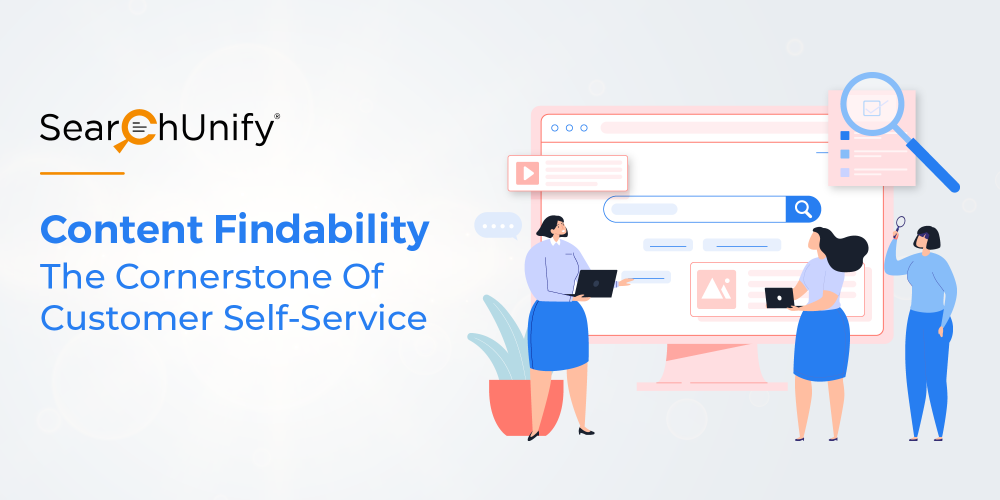
91% of organizations identify web self-service as a relevant investment focus for its ability to help reduce contact center costs, relieve pressure on customer support agents, and drive customer journey KPIs. However, only 9% of customers are able to optimize those channels and self-serve successfully.
Have you ever received a call from your customer asking for information that is already available on your community or help section? Well, it happens with most of us and a hell lot of times! In such scenarios, your content is as good as non-existent.
Brands are often under the assumption that implementing cognitive search makes content findable. However, the difference between findability and searchability is more than often overlooked. In this blog post, we’ll brief you about the difference between the two terms, what are the key challenges that hamper findability, and how cognitive technology helps to quash them. Let’s get rolling.
Findability Vs Searchability
Contrary to popular belief, findability is not just a buzzword that is synonymous to searchability. To make a data repository searchable, you simply need to plug-in a connector, index the repository, and display a search client to the user. However, if you want users to find what they are looking for, you need to add relevance and improve the discovery experience. That’s what findability brings to the table — an exceptional search experience and personalized relevance.
The Biggest Challenges Of Content Findability
It’s not just the customers who bear the brunt of poor content findability; your support representatives too have to deal with prolonged call handle times, limited self-service resolution, reduced case deflection, lowered first call resolution, etc. as an aftermath of mediocre findability. Is the underlying cause of failed findability content, search engine , or both? Let’s find out.
- Unstructured Data: As per IDC, 80 percent of worldwide data will be unstructured by 2025. This brings us to the first and the foremost challenge of findability — unstructured data. Traditional unstructured data stores consisted of text documents and other file types, including videos, photos, and audios. However, the modern rush of unstructured data is often caused by sources outside the organization, including social media data or real-time streaming data; making it difficult to search, edit, and analyze content.
- Disparate Silos: Separated and isolated silos make it difficult to conduct a simple enterprise-wide search of content. When the same content is stored in disconnected systems, information tends to be redundant and duplicate. Moreover, you are likely to miss out on the bigger picture if you fail to piece the disjointed content pieces together. Therefore, to thrive in the age of big data, it is of paramount importance to provide a unified view of disparate silos for a connected user experience.
- Keyword-Based Search: The biggest drawback of keyword-based search is that it lacks context. It doesn’t matter how much content you have in the repositories — if it is not contextually relevant, you are unlikely to find the right information at the right time. And what’s the point of having a self-service portal when eventually customers have to contact support agents for resolution?
- Lack of Metadata Management: What card catalog is to a library, metadata is to digital content. Metadata management impacts the overall search experience. When appropriate and relevant metadata attributes are not assigned to content, it gets challenging to surface relevant information at the top of SERPs. Therefore, while creating content, add a valuable set of metadata to your content.
- Lack of Continuous Knowledge Maintenance: KCS is often considered as an additional task that impedes agent productivity. Perhaps a reason why many businesses struggle to maintain their knowledge bases. On failing to do so, the relevance of content is implausible. Ultimately, all the enterprise-wide knowledge is futile if it doesn’t help you deliver value to customers.
Want to Know How Cognitive Search Improves Findability?
By and large, content findability is not just a content or search problem. It’s affected by both. Tune in to our upcoming panel discussion, Content Findability: The Cornerstone Of Customer Self-Service, on November 19, 2020 at 10 AM PST and hear straight from customer support, customer education, and customer success experts how you can attain self-service nirvana by improving content health and deploying intelligent search.











